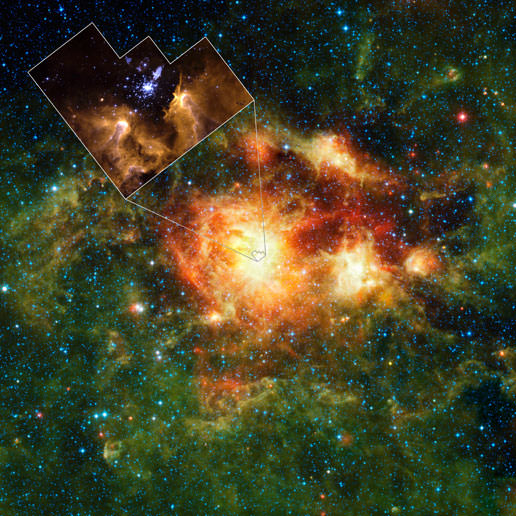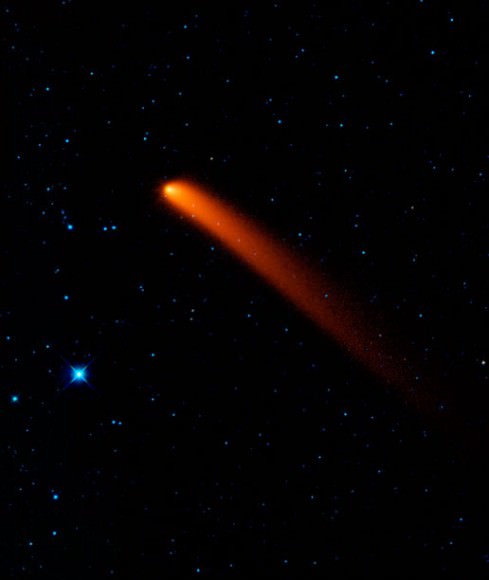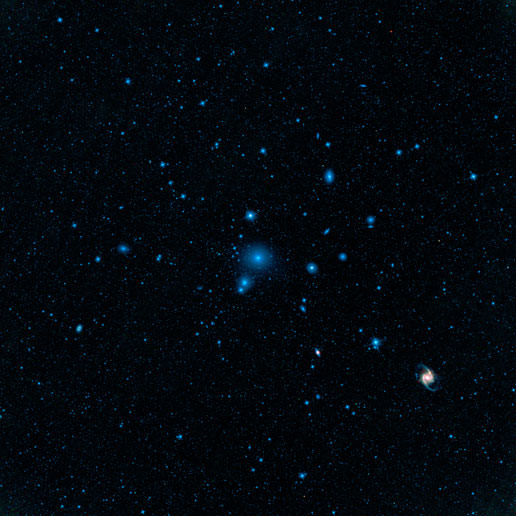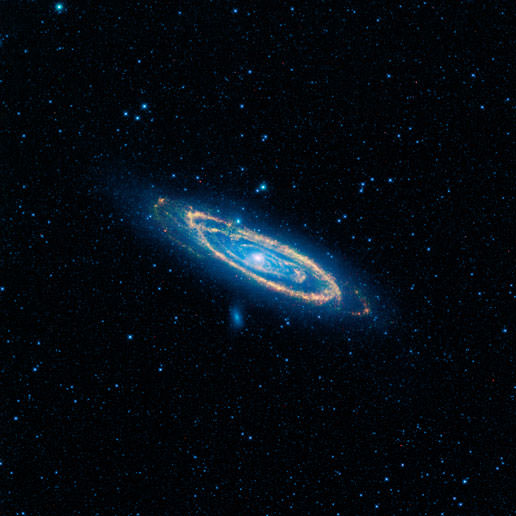[/caption]
The WISE (Wide-field Infrared Survey Explorer) mission isn’t wasting any time in making observations and releasing images. Already the new infrared observatory has spied its first comet and first near Earth asteroid, and today released a “sweet” collection of eye candy from across the universe. “We’ve got a candy store of images coming down from space,” said Edward (Ned) Wright of UCLA, the principal investigator for WISE. “Everyone has their favorite flavors, and we’ve got them all.”
Four new, processed pictures illustrate a sampling of the mission’s targets — a bursting star-forming cloud, a faraway cluster of hundreds of galaxies, a wispy comet, and above, the grand Andromeda galaxy as we’ve never seen it before, with new details of its ringed arms of stars .

Another image shows a bright and choppy star-forming region called NGC 3603, lying 20,000 light-years away in the Carina spiral arm of our Milky Way galaxy. This star-forming factory is churning out batches of new stars, some of which are monstrously massive and hotter than the sun. The hot stars warm the surrounding dust clouds, causing them to glow at infrared wavelengths.

This image shows the beauty of a comet called Siding Spring. As the comet parades toward the sun, it sheds dust that glows in infrared light visible to WISE. The comet’s tail, which stretches about 10 million miles, looks like a streak of red paint. A bright star appears below it in blue. WISE is expected to find perhaps dozens of comets, and bagged its first one on January 22, 2010. WISE will help unravel clues locked inside comets about how our solar system came to be.

The fourth WISE picture is of the Fornax cluster, a region of hundreds of galaxies all bound together into one family. These galaxies are 60 million light-years from Earth. The mission’s infrared views reveal both stagnant and active galaxies, providing a census of data on an entire galactic community.
“All these pictures tell a story about our dusty origins and destiny,” said Peter Eisenhardt, the WISE project scientist at NASA’s Jet Propulsion Laboratory in Pasadena, Calif. “WISE sees dusty comets and rocky asteroids tracing the formation and evolution of our solar system. We can map thousands of forming and dying solar systems across our entire galaxy. We can see patterns of star formation across other galaxies, and waves of star-bursting galaxies in clusters millions of light years away.”
Since WISE began its scan of the entire sky in infrared light on Jan. 14, the space telescope has beamed back more than a quarter of a million raw, infrared images. The mission will scan the sky one-and-a-half times by October. At that point, the frozen coolant needed to chill its instruments will be depleted. However, the team predicts the spacecraft will be still be operational for 3 additional months following the 10 month prime mission.
So, stay tuned for more images from WISE!
Source: NASA


BIG WOW!
Beautiful…I love this telescope.
Abundant radio and stellar debris remain between massive M 31 and it’s local group dwarf systems in decaying orbits around M 31. I would also point out that, band-new, recent, very deep, imaging of edge-on galaxy NGC 891 by deep Surbaru imaging has revealed stellar streams most likely from cannabalization of several dwarf galaxies caught in NGC 891’s gravitational well. This is similar to the celestial stellar streams recently discovered recently discovered around NGC 5907 and NGC 4013, and will be usefull in determining DM ratios and concentrations in these nearby systems. Check out the preprint at: http://arxiv.org/abs/1002.0461v1